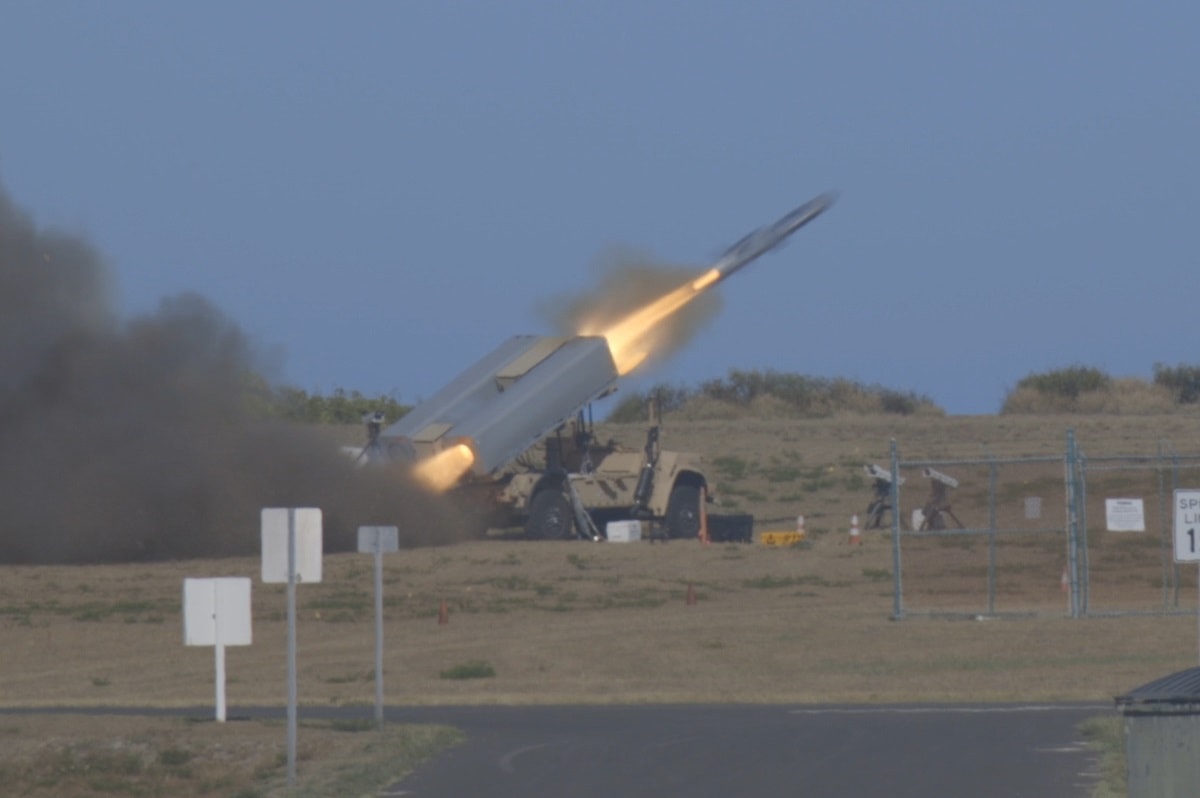Naval Strike Missile: What China’s Navy Fears? Much digital ink has been spilled over China’s growing naval power these days and it is beginning to get a little repetitive, to say the least. More ships, more aircraft carriers, better naval aviation – and on and on it goes. The coverage and hype connected to the People’s Liberation Army Navy (PLAN) is getting to be tiresome. That’s why it’s interesting to report on a positive development on the American side that can put the PLAN in its place.
I’m talking about the Naval Strike Missile, or NSM for short, a fifth-generation long-range precision missile. This is surprisingly a Norwegian product from Kongsberg Defence and Aerospace in partnership with Raytheon. This anti-ship munition has plenty going for it. The over-the-horizon standoff missile fight should be improved with the Naval Strike Missile (NSM).
Below is a quick rundown on why this missile platform likely has many admirals around the world a little more nervous these days. And, yes, that means flag officers in China as well.
Four Reasons the NSM Stands Apart
First, the NSM can evade radar, while flying low and fast over water or hugging the ground. Second, advanced composite materials make it harder to detect. Third, it spoofs enemy countermeasures by changing flight characteristics during its terminal flight phase. Fourth, its fuse can be programmed for better penetrating effect.
Put It on the Littoral Combat Ship
The missile was on board its first U.S. Littoral Combat Ship in 2019. China has its own corvette-sized craft with long-range. Taking this into consideration, by the end of 2022, the Naval Strike Missile will be deployed on all the small vessels. Now Littoral Combat Ships will receive two launchers fitting four canisters each installed on the bow, along with the required fire control systems.
A Powerful Missile With Some Range
The Naval Strike Missile has a 500-pound warhead and can destroy an enemy ship loner than 100 nautical miles away. On its medium course, it is GPS-guided with a dual-band imaging infrared seeker for better target acquisition. All these capabilities come with a price – the missile costs $2.2 million each.
Nevertheless, the Navy is forging ahead with NSM deployment. It just got installed on the USS Oakland LCS this month. Other Littoral Combat Ships equipped with Naval Strike Missiles are the USS Jackson, USS Charleston, USS Gabrielle Giffords, and USS Tulsa.

A Naval Strike Missile streaks out to sea before striking a naval target ship, Aug. 15, 2021, aboard Pacific Missile Range Facility Barking Sands, Hawaii. The missile flew more than 100 nautical miles before finding its mark. The live-fire sinking exercise demonstrated a Marine fires expeditionary advanced base’s ability to sense, target and strike a target at sea, providing sea control or contributing to sea denial in fleet operations. The Marine Corps’ Force Design 2030 centers on Marines providing long-range precision strike capabilities as a stand-in force during littoral operations in a contested environment. (U.S. Marine Corps photo by Lance Cpl. Dillon Buck, released)

PHILIPPINE SEA (Oct. 1, 2019) The Independence-variant littoral combat ship USS Gabrielle Giffords (LCS 10) launches a Naval Strike Missile (NSM) during exercise Pacific Griffin. The NSM is a long-range, precision strike weapon that is designed to find and destroy enemy ships. Pacific Griffin is a biennial exercise conducted in the waters near Guam aimed at enhancing combined proficiency at sea while strengthening relationships between the U.S. and Republic of Singapore navies. (U.S. Navy photo by Mass Communication Specialist 2nd Class Kenneth Rodriguez Santiago/Released) 191001-N-GZ947-0002
Marines Got a Generous Earmark for the NSM
The Marine Corps is also getting in on the fun with its Navy-Marine Corps Expeditionary Ship Interdiction System (NMESIS) program. NMESIS fires a Naval Strike Missile from the top of a Joint Light Tactical Vehicle. So, this is a ground-based anti-ship missile that can help the Marine Corps’ stand-off fight strategy.
The marines are not playing around with NMESIS. The National Defense Authorization Act has been generous to the marines. For FY22, the Corps will get 35 anti-ship Naval Strike Missiles for $57.8 million.
NSM Is Good News for Both the Navy and Marine Corps
Both the Navy and Marines have high hopes for the Naval Strike Missile. I can see it having a future in an island-hopping fight where China continues to militarize rocks and reefs. During a potential conflict, the navy would launch a bevy of NSMs at the Spratlys, for example. These would also help the Marine Corps as it concentrates more on amphibious warfare because there could be a scenario in which the Naval Strike Missile could be launched from marine amphibious ships. All of these developments spell trouble for the Chinese.
Now serving as 1945’s Defense and National Security Editor, Brent M. Eastwood, PhD, is the author of Humans, Machines, and Data: Future Trends in Warfare. He is an Emerging Threats expert and former U.S. Army Infantry officer. You can follow him on Twitter @BMEastwood.

